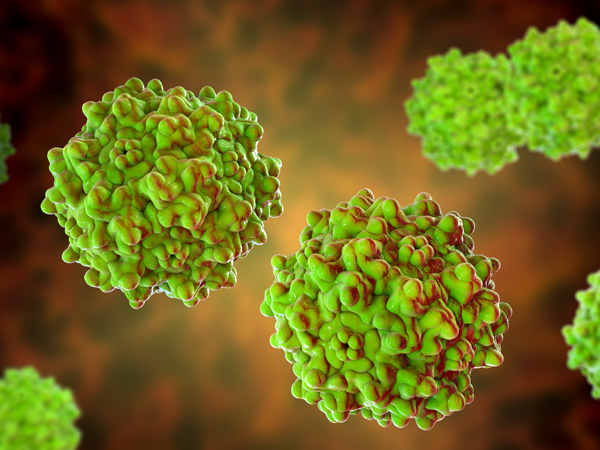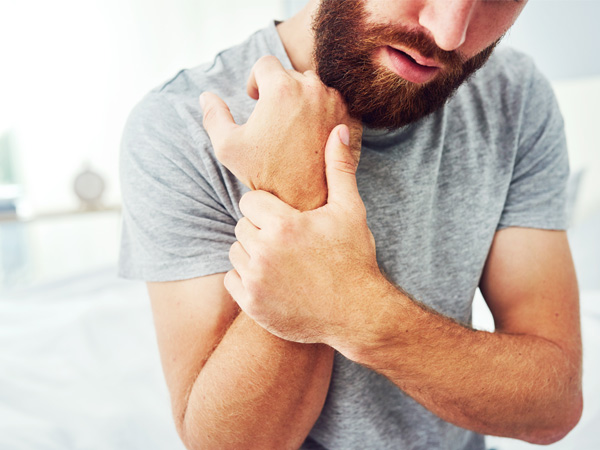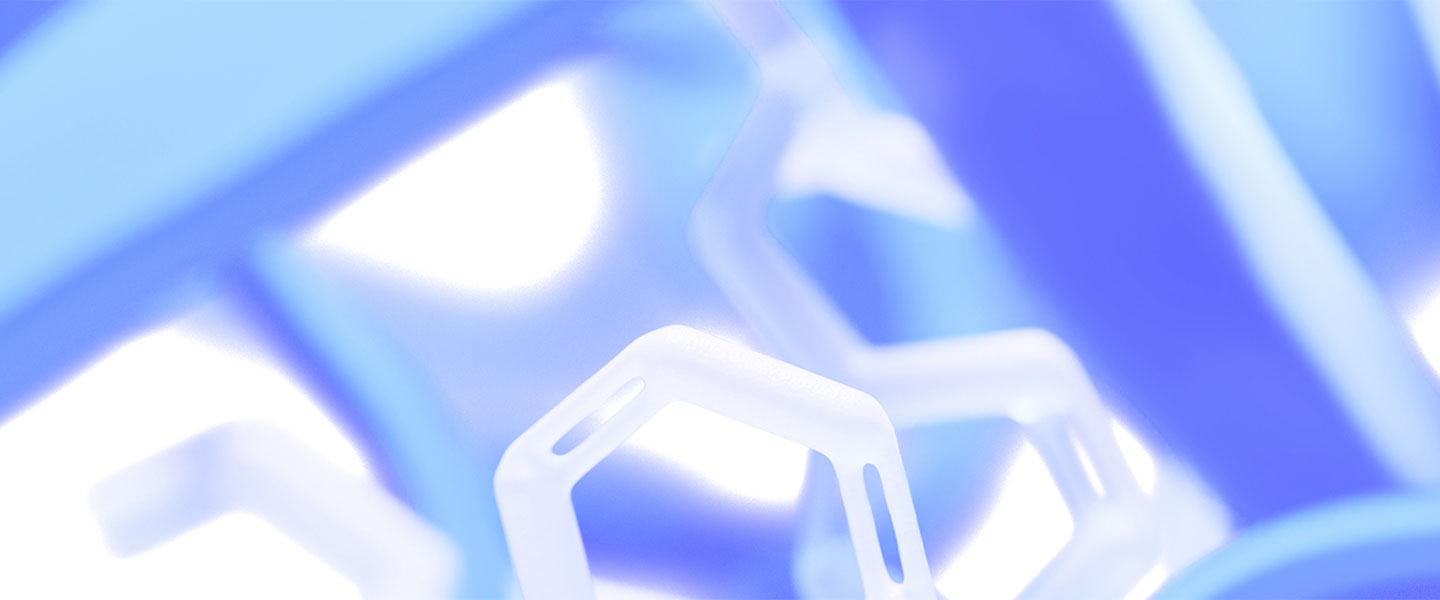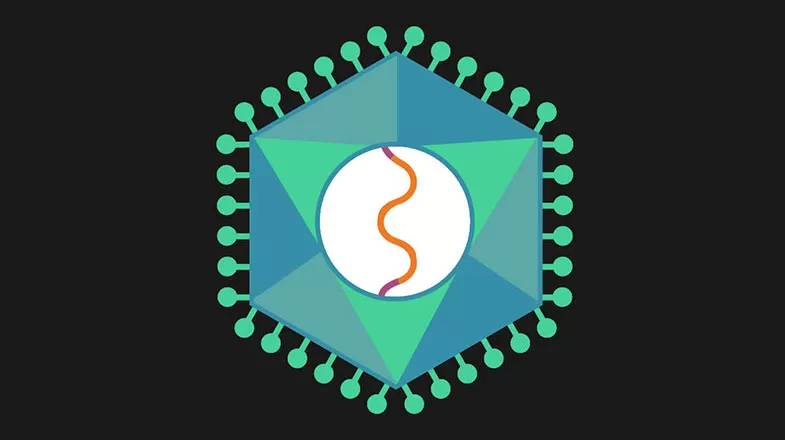- Home
- Science
- Diseases & Conditions
- Duchenne Muscular Dystrophy
What Is Duchenne Muscular Dystrophy?
Duchenne muscular dystrophy (DMD) is a genetic disorder that leads to progressive muscle weakness and degeneration. There are more than 30 types of muscular dystrophies, with DMD accounting for about half of all muscular dystrophy cases.1
Prevalence of Duchenne Muscular Dystrophy
DMD almost exclusively presents in the XY chromosome combination—people who are most often assigned male at birth. Only rarely does it affect people with the XX chromosome, who tend to be assigned female at birth.2
Globally, fewer than 10 cases of DMD occur in every group of 100,000 people assigned male at birth. In total, dystrophy disorders affect anywhere between 1 in 5,000, to 1 in 6,000 people assigned male at birth.3 About 250,000 people in the United States have some form of muscular dystrophy.4 Experts estimate fewer than 50,000 people in the United States have DMD.2
Causes and Risk Factors
What Causes Duchenne Muscular Dystrophy?
Duchenne muscular dystrophy is caused by an either spontaneous or inherited genetic mutation in the DMD gene, which is the largest known gene and holds instructions for the protein dystrophin.5
Dystrophin protein helps muscles recover from mechanical stress appearing during normal movements. Mutations in the DMD gene can cause the body to produce little to no dystrophin. Without it, muscle cells become fragile, deteriorate, and, over time, die. Eventually, muscle function is completely lost.3

Duchenne Muscular Dystrophy and Genetics
The Duchenne muscular dystrophy inheritance pattern is X-linked, meaning the DMD gene is tied to the X chromosome. The genetic variant or mutation that leads to DMD is recessive, which is why it matters whether a person has just one copy of the X chromosome or two.5
People who have XY chromosomes are often assigned male at birth. Their lone X chromosome always comes from the parent with XX chromosomes. Someone with two X chromosomes, including one with the DMD mutation, is considered a carrier. This is true even if they do not have any DMD symptoms, thanks to their other copy of the gene.5
This means XY children with carrier mothers have a 50% chance of both inheriting the gene and then developing DMD.5
Children with XX chromosomes with carrier mothers have the same chance of inheriting the affected gene. However, even if they do, they are unlikely to experience major DMD symptoms. This is because their other X chromosome—from the XY parent—very likely doesn't have a DMD mutation. As a result, their bodies typically can create enough dystrophin protein.1
It is possible for an XY child to be the first in a family to have DMD. It may be that a long line of carrier mothers never produced an XY child (or that they did but the condition wasn't recognized). Another explanation is that a new mutation happened in the mother's egg cells. These spontaneous cases of DMD may occur because the associated gene’s large size makes it susceptible to mutations.1
Duchenne Muscular Dystrophy Risk Factors
People are more likely to inherit Duchenne Muscular Dystrophy when they have:5
- A family history of DMD, which puts a person at a higher risk of having it or being a carrier.
- A carrier mother, which means male XY children have a 50% chance of inheriting a mutated gene and developing DMD.
Types of Muscular Dystrophies
There are more than 30 types of muscular dystrophies, each affecting specific muscle groups and showing symptoms at different ages.1 Becker muscular dystrophy (BMD) and Duchenne muscular dystrophy are both caused by mutations in the dystrophin-producing DMD gene, but BMD tends to appear much later in life and result in less severe symptoms because patients still produce dystrophin, just at lower-than-normal levels.1,6
BMD usually first appears during a patient's teenage years or early 20s but can start as late as their 60s. The severity of symptoms with BMD varies greatly.4
Duchenne Muscular Dystrophy Symptoms
The main sign of Duchenne muscular dystrophy is worsening muscle weakness and loss.2 Enlarged calf muscles are common,2 as is pseudohypertrophy, which is caused by a buildup of the fat and connective tissue replacing muscle cells that have died.7 Progressive heart enlargement, or cardiomyopathy, is also typical.2

Progression of Duchenne Muscular Dystrophy Symptoms
Most children with Duchenne muscular dystrophy are diagnosed between ages 2 and 11.2 In early childhood, people may begin to show common DMD signs, such as walking on their toes, trouble with climbing stairs, clumsiness, weakness, or using their hands to “walk” up their shins to stand, called Gowers’ sign.8,9 These symptoms often follow a common progression:
- Childhood
- Weak or wasting muscles in the upper legs, pelvis, upper arms, or shoulders
- Bulky muscles in other areas
- Muscle weakness that spreads to the neck, trunk, forearms, and lower legs
- Delayed ability to sit or stand without help
- Walking on toes
- Unusual or waddling walk
- Loss of certain reflexes
- Trouble climbing stairs
- Difficulty rising from a seat or a lying position
- Frequent falls (especially when trying to run)
- Inability to run or jump
- Changes in the curvature of the spine
- Changes in range of motion in joints
- Difficulty breathing as muscles of the diaphragm weaken
Sometimes, between the ages of 3 and 6, children may exhibit brief periods of improvement in these areas, but further muscular degeneration often follows.1 By age 8 or 9, some children may require leg braces to walk, especially if they do not receive physical therapy.4 - Adolescence and Teenage Years
By early adolescence, most children with DMD can no longer walk,1 and some may require a wheelchair as early as ages 10 to 12.4 Other developments may include:
- Decreased bone density4
- Increased risk of fractures4
- Mild or moderate learning disabilities or intellectual impairment4
- Scoliosis10
- Fixed tightening in certain joints (contractures), which may worsen with wheelchair use4,11
- Possible side effects of long-term steroid treatments12
- Weak diaphragm muscles, causing respiratory issues1,13
- Cardiomyopathy, a disease of the heart muscle4
- Problems swallowing14
- Adulthood
In early adulthood, people with DMD generally experience significant respiratory and cardiac limitations, which can be fatal. On average, the life expectancy for someone with DMD is mid- to late 20s.15
Physicians use a well-established process to diagnose DMD. The diagnosis requires a clinical examination, a blood test, and a genetic screening.
Determining whether a person has DMD begins with a thorough clinical examination. Doctors examine muscle weakness and atrophy patterns, assess coordination and reflexes, and monitor muscle contraction.1
Physicians also establish a complete medical history by asking questions and reviewing prior medical records and test results. Doctors also take vital signs and touch or manipulate different parts of the body to check for inflammation, masses, pain, or tenderness.1,8
Based on those findings, physicians may order follow-up tests, including lab work or imaging. They may refer the patient to another specialist.2
When physicians suspect DMD, they often order an assessment called a creatine kinase (CK) test. CK is an enzyme found in muscle tissue. In people with DMD, as muscle tissue becomes damaged, CK leaks into the bloodstream.16
Typically, a person who does not have DMD has a CK level that’s less than 200 units per liter. A person with DMD may have a CK level that’s anywhere from 10 to 100 times that level.16
While a CK test can confirm whether there’s an issue with a person’s muscles, it does not conclusively indicate that someone has DMD. Diagnosis requires one more step.16
Analysis of the patient's DMD gene from DNA samples can help identify deletions, duplications, or single-point mutations. Tests for Duchenne muscular dystrophy typically use the polymerase chain reaction (PCR) method.17
DMD may be diagnosed with genetic testing before the child is born and may be advised for parents who have a family history of the condition. The parents may first undergo tests to identify if either is a carrier of a mutated DMD gene. Afterward, the pregnant parent may be advised to undergo an amniocentesis or chorionic villus sampling (CVS) test to detect and identify the fetus's genetic mutations.1
Duchenne Muscular Dystrophy Treatment
There is no cure for DMD, nor can muscle damage or loss be reversed. Treatments focus on slowing its progression, managing and alleviating symptoms and complications, and improving a person's quality of life.1,4
- Duchenne Muscular Dystrophy Medications
Some drugs, such as the corticosteroid prednisone, can slow muscle loss and help some people with DMD stay strong and mobile for longer. However, these drugs can have side effects, including height loss, changes to the shape of the face, weight gain, and weakened bones.1
Other drugs may temporarily relieve muscle spasms and weakness, such as mexiletine, phenytoin, baclofen, dantrolene, and quinine.1
When heart-related complications like cardiomyopathy arise, physicians sometimes prescribe drugs such as beta-blockers and angiotensin-converting enzyme (ACE) inhibitors.18
- Duchenne Muscular Dystrophy Therapies
Some therapies have been shown to increase functional dystrophin levels in small amounts.19 One common category of drugs, referred to as “exon skipping” medications, may help some patients produce more useful dystrophin by “skipping” problematic parts of genes that cause issues in muscle proteins.20 Currently, the U.S. Food and Drug Administration has approved exon skipping therapies that treat DMD patients whose dystrophin gene mutation is amenable to exon 45,21 exon 51,22 or exon 53 skipping.23,24
These therapies do not work for everyone with DMD. The three approved exon skippers are viable for only about 8%, 13%, and 8%, of patients, respectively.21, 22, 23, 24
Other drugs, classified as translational readthrough-inducing drugs,25 “read through” so-called “nonsense mutations” that lead to DMD.26
- Duchenne Muscular Dystrophy Physical Therapy
Physical therapy can help patients retain muscle flexibility and strength, improve movement, and prevent deformity. It involves a combination of exercise, stretching, and posture-correcting activities and should be started as soon as a formal diagnosis is made.1
- Adaptive Equipment for Duchenne Muscular Dystrophy
Mobility aids, such as wheelchairs and leg braces, can help people with DMD continue to move about and stay physically active. Breathing devices, such as ventilators, are sometimes used to manage weakness in respiratory muscles and help with breathing difficulties.1
Global Impact of Duchenne Muscular Dystrophy
The frequency of people born with Duchenne muscular dystrophy varies around the globe.27 In the United States alone, DMD occurs in nearly 1 assigned-male live births per 3,500.4 In Germany, the prevalence of DMD is as low as 1.5 per 100,000, while Italy sees rates as high as 28.2.27

Frequently Asked Questions About Duchenne Muscular Dystrophy
- How is Duchenne muscular dystrophy inherited?
It's passed down via the X chromosome by an XX parent (often called the mother) carrying a DMD gene mutation. Because XY children only have one X chromosome, they will develop the condition if a DMD mutation is passed down. Although XX children can also inherit a DMD mutation, they usually have another X chromosome that will keep DMD from developing.5
- Is Duchenne muscular dystrophy dominant or recessive?
DMD is recessive.1 People with XX chromosomes have two copies of the DMD gene. A mutated version on only one of them often isn't enough to cause DMD. They instead become carriers. In contrast, in dominant inheritance patterns, a single copy of the mutated gene is enough to cause the disease.1,5
- What type of genetic disorder is Duchenne muscular dystrophy?
Duchenne muscular dystrophy is X-linked, meaning it's caused by mutated genes on the X chromosome.5
- Can males be carriers of Duchenne muscular dystrophy?
Yes, people with XY chromosomes who have DMD are carriers. If they have children, they won't pass their DMD gene to any XY children, since the child’s X chromosome always comes from the XX parent. But any XX children will also be carriers.5
- What is the lifespan of someone with Duchenne muscular dystrophy?
The average life expectancy is mid- to late-20s.15
Find a Pfizer clinical trial for Duchenne muscular dystrophy at PfizerClinicalTrials.com.
Explore Duchenne muscular dystrophy trials at ClinicalTrials.gov.
Area of Focus: Rare Disease
Duchenne Muscular Dystrophy is a focus of Pfizer’s Rare Disease Therapeutic Area. Visit the Rare Disease Page.
- References
- Muscular dystrophy: Hope through research. National Institute of Neurological Disorders and Stroke. https://www.ninds.nih.gov/Disorders/Patient-Caregiver-Education/Hope-Through-Research/Muscular-Dystrophy-Hope-Through-Research. Last modified July 8, 2021. Accessed February 18, 2022.
- Duchenne muscular dystrophy. National Center for Advancing Translational Sciences. https://rarediseases.info.nih.gov/diseases/6291/duchenne-muscular-dystrophy. Last updated November 2, 2020. Accessed February 18, 2022.
- Duan D, Goemans N, Takeda S, Mercuri E, Aartsma-Rus A. Duchenne muscular dystrophy. Nat Rev Dis Primers. 2021;7(1):13.
- Duchenne muscular dystrophy. National Organization for Rare Disorders. https://rarediseases.org/rare-diseases/duchenne-muscular-dystrophy. Accessed July 13, 2022.
- Causes/inheritance. Duchenne Muscular Dystrophy (DMD). Muscular Dystrophy Association. https://www.mda.org/disease/duchenne-muscular-dystrophy/causes-inheritance. Accessed July 13, 2022.
- What Is Muscular Dystrophy? Centers for Disease Control and Prevention. https://www.cdc.gov/ncbddd/musculardystrophy/facts.html. Accessed April 27, 2022.
- Torriani M, Townsend E, Thomas BJ, Bredella MA, Ghomi RH, Tseng BS. Lower leg muscle involvement in Duchenne muscular dystrophy: an MR imaging and spectroscopy study. Skeletal Radiol. 2012;41(4):437-445.
- Birnkrant DJ, Bushby K, Bann CM, et al. Diagnosis and management of Duchenne muscular dystrophy, part 1: diagnosis, and neuromuscular, rehabilitation, endocrine, and gastrointestinal and nutritional management. The Lancet Neurology. 2018;17(3):251-267.
- Kelfer H. Gowers’ sign in diskitis. Arch Pediatr Adolesc Med. 1982;136(6):555.
- Archer JE, Gardner AC, Roper HP, Chikermane AA, Tatman AJ. Duchenne muscular dystrophy: the management of scoliosis. J Spine Surg. 2016;2(3):185-194.
- Skalsky AJ, McDonald CM. Prevention and management of limb contractures in neuromuscular diseases. Physical Medicine and Rehabilitation Clinics of North America. 2012;23(3):675-687.
- Ricotti V, Ridout DA, Scott E, et al. Long-term benefits and adverse effects of intermittent versus daily glucocorticoids in boys with Duchenne muscular dystrophy. Journal of Neurology, Neurosurgery & Psychiatry. 2013;84(6):698-705.
- Fayssoil A, Chaffaut C, Ogna A, et al. Echographic assessment of diaphragmatic function in Duchenne muscular dystrophy from childhood to adulthood. JND. 2019;6(1):55-64.
- Toussaint M, Davidson Z, Bouvoie V, Evenepoel N, Haan J, Soudon P. Dysphagia in Duchenne muscular dystrophy: practical recommendations to guide management. Disability and Rehabilitation. 2016;38(20):2052-2062.
- Cheeran D, Khan S, Khera R, et al. Predictors of death in adults with Duchenne muscular dystrophy–associated cardiomyopathy. JAHA. 2017;6(10):e006340.
- Is it Duchenne? Diagnosis. Parent Project Muscular Dystrophy. https://www.parentprojectmd.org/about-duchenne/is-it-duchenne/diagnosis/. Accessed July 19, 2022.
- Aartsma-Rus A, Ginjaar IB, Bushby K. The importance of genetic diagnosis for Duchenne muscular dystrophy. Journal of Medical Genetics. 2016;53(3):145-151. https://www.ncbi.nlm.nih.gov/pmc/articles/PMC4789806/. Published March 2016. Accessed July 19, 2022.
- Medical management. Duchenne muscular dystrophy (DMD). Muscular Dystrophy Association. https://www.mda.org/disease/duchenne-muscular-dystrophy/medical-management. Accessed July 19, 2022.
- Happi Mbakam C, Lamothe G, Tremblay JP. Therapeutic strategies for dystrophin replacement in Duchenne muscular dystrophy. Front Med. 2022;9:859930.
- What are the treatments for muscular dystrophy (MD)? US Department of Health and Human Services. https://www.nichd.nih.gov/health/topics/musculardys/conditioninfo/treatment. Last modified November 9, 2020. Accessed July 20, 2022.
- FDA approves targeted treatment for rare Duchenne muscular dystrophy mutation. US Food & Drug Administration. https://www.fda.gov/news-events/press-announcements/fda-approves-targeted-treatment-rare-duchenne-muscular-dystrophy-mutation-0. Last modified February 25, 2021. Accessed July 20, 2022.
- FDA grants accelerated approval to first drug for Duchenne muscular dystrophy. US Food & Drug Administration. https://www.fda.gov/news-events/press-announcements/fda-grants-accelerated-approval-first-drug-duchenne-muscular-dystrophy. Last modified September 19, 2016. Accessed July 20, 2022.
- FDA approves targeted treatment for rare Duchenne muscular dystrophy mutation. US Food & Drug Administration. https://www.fda.gov/news-events/press-announcements/fda-approves-targeted-treatment-rare-duchenne-muscular-dystrophy-mutation. Last modified August 12, 2020. Accessed July 20, 2022.
- FDA grants accelerated approval to first targeted treatment for rare Duchenne muscular dystrophy mutation. US Food & Drug Administration. https://www.fda.gov/news-events/press-announcements/fda-grants-accelerated-approval-first-targeted-treatment-rare-duchenne-muscular-dystrophy-mutation. Last modified December 12, 2019. Accessed July 20, 2022.
- Schilff M, Sargsyan Y, Hofhuis J, Thoms S. Stop codon context-specific induction of translational readthrough. Biomolecules. 2021;11(7):1006.
- Ng MY, Li H, Ghelfi MD, Goldman YE, Cooperman BS. Ataluren and aminoglycosides stimulate read-through of nonsense codons by orthogonal mechanisms. Proc Natl Acad Sci USA. 2021;118(2):e2020599118.
- Crisafulli S, Sultana J, Fontana A, Salvo F, Messina S, Trifirò G. Global epidemiology of Duchenne muscular dystrophy: an updated systematic review and meta-analysis. Orphanet J Rare Dis. 2020;15(1):141.
The information contained on this page is provided for your general information only. It is not intended as a substitute for seeking medical advice from a healthcare provider. Pfizer is not in the business of providing medical advice and does not engage in the practice of medicine. Pfizer under no circumstances recommends particular treatments for specific individuals and in all cases recommends consulting a physician or healthcare center before pursuing any course of treatment.
Related Articles
Creating Customized Gene Therapy Vehicles
Gene therapy shows great promise for treating and potentially curing a number of single-gene disorders, such as Duchenne muscular dystrophy, hemophilia and cystic fibrosis. Gene therapy uses an engineered virus, called a viral vector, to deliver a healthy copy of a gene to diseased cells. In the...

